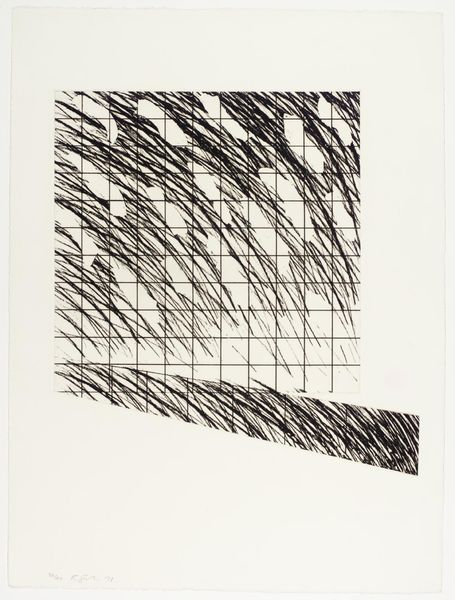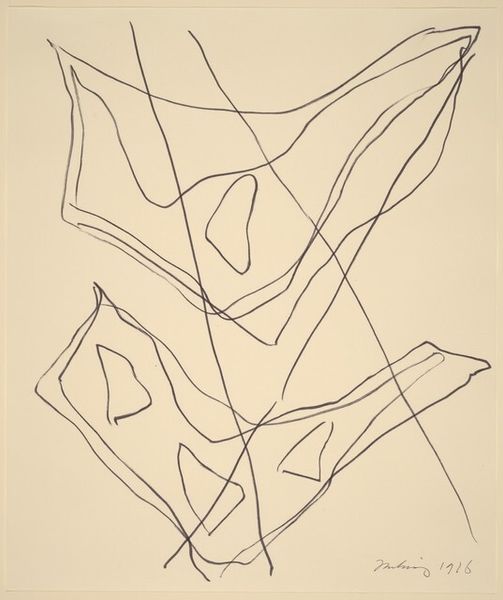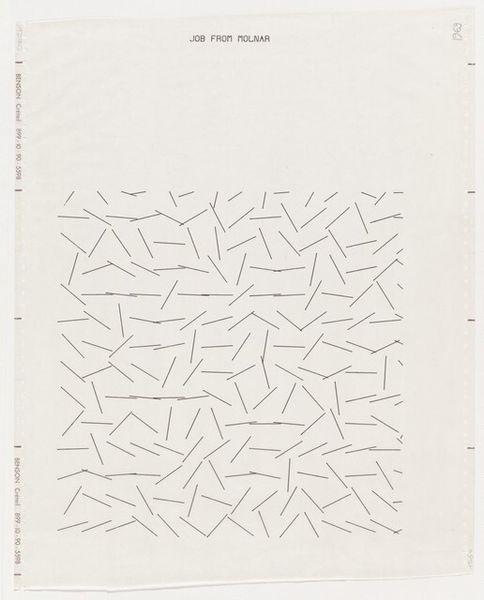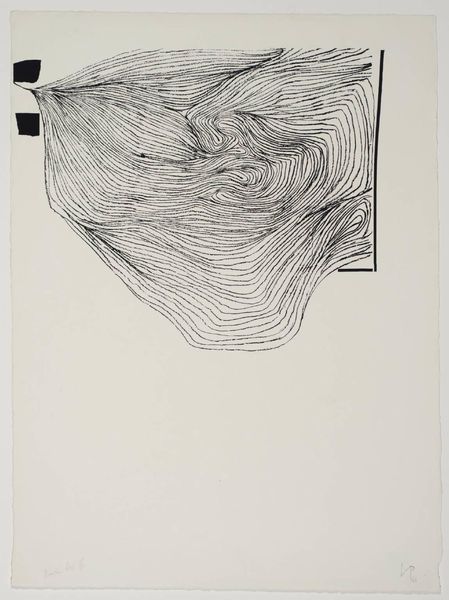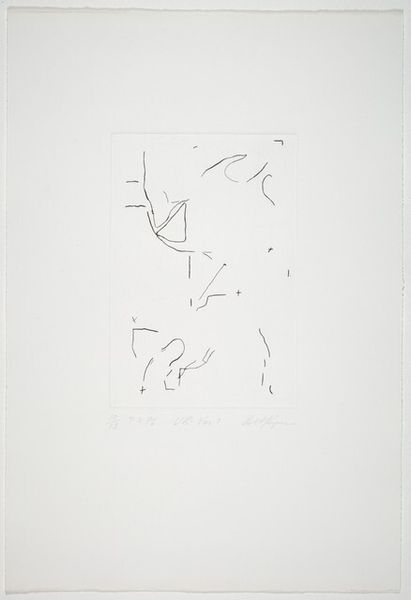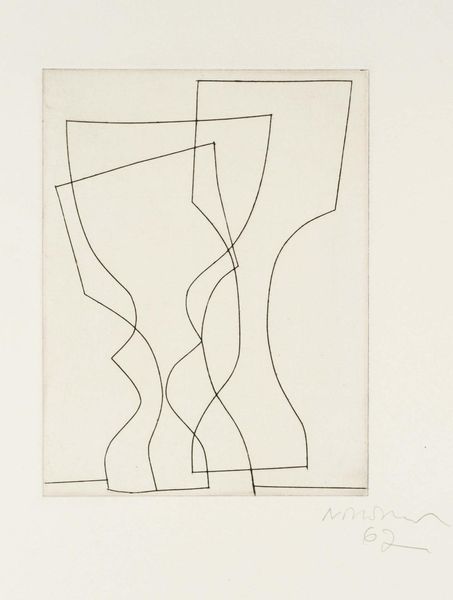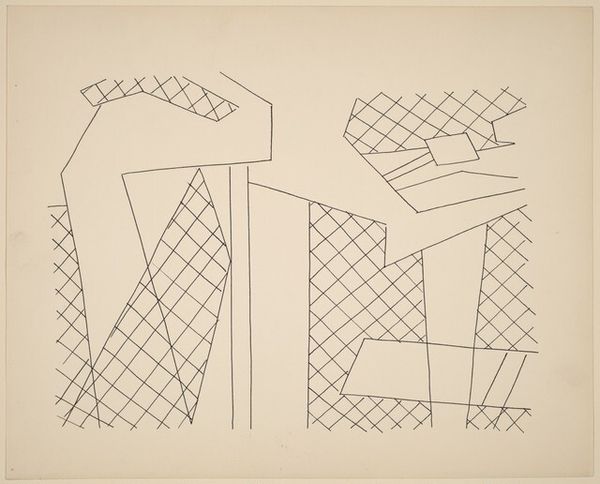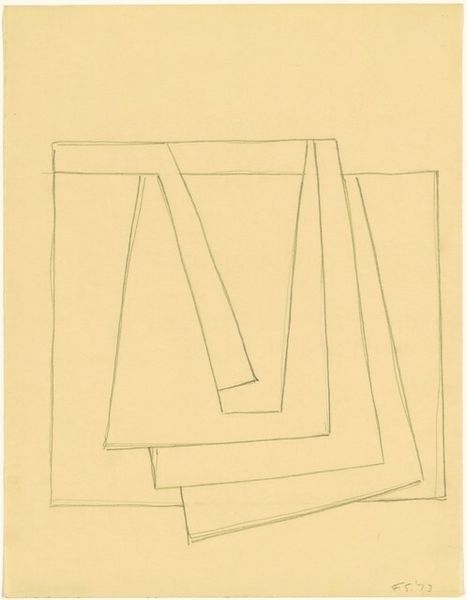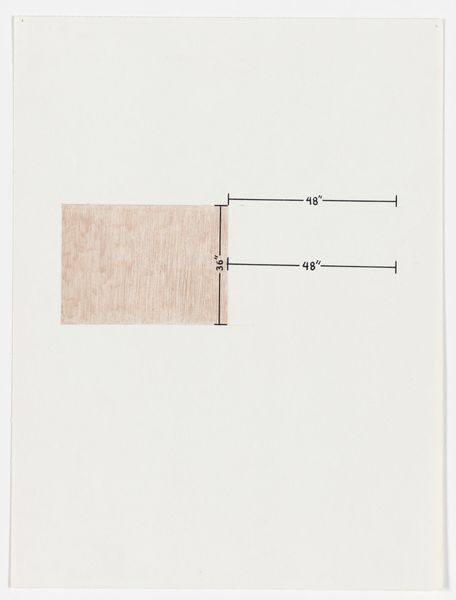
#
conceptual-art
# print
#
geometric
#
abstraction
#
line
Copyright: Gego,Fair Use
Editor: Here we have Gego's "Reticulárea," created in 1973. It's a print of what looks like a distorted geometric grid. The lines seem to almost... sag, but with purpose. How do you interpret this work? Curator: Looking at the material components—the printed line, the paper itself—we can see Gego questioning the very structure of representation. A grid typically signifies order, but here it’s manipulated, almost broken down. This fracturing mirrors, I think, a critical shift in how materials are conceptualized in art. The "how" of its making really becomes the subject matter. Editor: So you're saying the way she physically altered the grid is key? The process behind the art is the art? Curator: Exactly! Consider the act of printing: a repeatable process made unique by Gego’s intervention. The grid isn't inherently expressive, but the labor of distorting, breaking it, imbues it with meaning. The materials themselves tell a story. This was a period when artists began experimenting beyond the established idea of 'fine art', so how might this work relate to architecture or design processes of that time? Editor: That's interesting, I hadn't thought of it in relation to design processes. Curator: These distorted grids reflect that period's exploration into structural instability. What at first appears to be abstract decoration in 'high art' might challenge our notions of function and decoration if seen in relation to applied arts. Gego used everyday materials, challenging existing hierarchies. Editor: So by examining her choices and actions, like the deliberate warping of the grid, we see her pushing the boundaries between artistic disciplines and critiquing the social structure? Curator: Precisely. It’s not just about what's depicted, but how the work’s created that matters, and what it might say about the systems and conventions around it. What was a decorative, design or mathematical exercise has been transformed into a means of questioning reality. Editor: I'll definitely look at other works from that time with those questions in mind, thank you! Curator: My pleasure! It's crucial to always question the process and the materials when trying to understand a work of art.
Comments
No comments
Be the first to comment and join the conversation on the ultimate creative platform.

